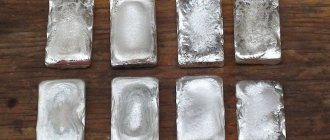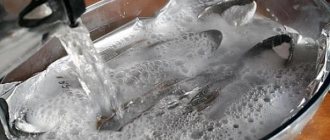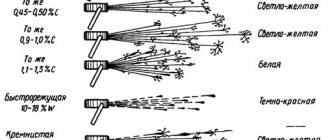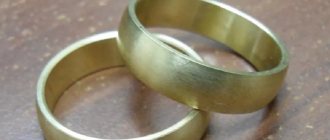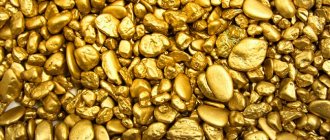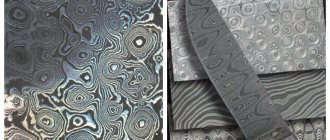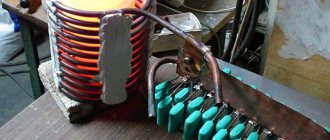Every jeweler, beginner or experienced, has a question in his head: how to melt gold at home. This is not as simple as it seems, because there are many pitfalls and nuances that should be taken into account by an individual who wants to engage in the business in question. For example, the metal should not be brittle and porous, as it turns out due to the action of oxygen on gold.
Let's figure out how to melt gold correctly. The question of how much remelting costs will also be raised.
What is needed for smelting
To melt this noble metal, you need the following:
- Crucible. Pure gold melts at temperatures exceeding 1000 degrees Celsius. Not everyone has a working container - a crucible - that can cope with such heat. But it can be replaced with raw potatoes. It is necessary to cut a hole in the tuber and put gold there. A container of natural origin will cope perfectly with melting.
- Forceps. Heat-resistant tongs are an essential tool when melting gold. They will have to touch the crucible frequently.
- A mixture of sodium carbonate and borax. It is used to make flux, which is added to gold before the smelting process. It takes two pinches of flux to clean every ounce of gold. The dirtier the noble metal, the greater the amount of this substance required for cleaning. Flux can also be made from baking soda and bicarbonate. When adding a substance, the contact between gold particles improves, and all impurities are better removed from the metal when it is heated.
- Oven or microwave. There is an option to purchase an electric furnace to melt metals or use a microwave. The latter must have a power of more than 1000 W, with a magnetron located on the side or behind the equipment.
There are furnaces sold at inexpensive prices that are specially made for melting metals. Such a device is designed for mixing several minerals at once, for example, gold, silver, aluminum, copper.
Attention! The microwave in which the precious metal was melted can no longer be used for domestic purposes. That is, heating and defrosting food.
If there is no oven or microwave, you must use a gas burner.
What is gold
In its pure form, gold is a shiny metal with a bright yellow color.
Number 79 of the periodic table, international designation – Aurum (Au). One of the most “massive” but soft metals with a cubic lattice structure centered on the faces. The name in modern languages goes back to a Proto-Indo-European root meaning “yellow, green, bright.” The Latin name, given in honor of the goddess of the dawn, Aurora, is also translated as “yellow”.
Scrap melting (process)
You need to be prepared for the fact that there will be a lot of impurities in scrap gold. Sometimes their amount in the metal reaches 25%. Such scrap is not suitable for figure casting, but you can work with it using the printing method (that is, heat and stretch).
- First, you need to sort the scrap by color. The more copper it contains, the redder its hue.
- To speed up the melting process, it is recommended to divide the scrap into small pieces.
- Next, you need to carefully sprinkle flux inside the crucible and put the precious metal there. You need to start with larger items (if you need to melt a lot of things), and add smaller ones as the process progresses.
- So, when the gold objects are laid out in the crucible, the latter is placed inside the furnace and wait until the gold becomes completely molten.
- Then you should pour the resulting substance into molds. And after that, immediately harden the metal with water or alcohol so that products made of metal become stronger.
But what to do if you only have a gas burner made by yourself?
Features of gold smelting
Gold used to make jewelry always contains additives called alloys. They help improve the quality characteristics of the finished alloy. For these purposes, use any of the following non-ferrous metals:
- Copper.
- Silver.
- Chromium.
- Platinum.
- Nickel and others.
The presence of a certain metal affects the final color of the alloy. Silver and copper give a reddish color, increased inclusion of copper will provide a rich red tint, an increase in the proportion of silver will give a yellowish color. We will tell you in more detail how to melt silver and other non-ferrous metals in other articles.
This is what gold looks like with the addition of various non-ferrous metals
The remaining metals listed are added only to white gold.
If copper is completely excluded from the alloy, but the amount of silver is increased to 50%, then the resulting products will have a characteristic greenish color
Making a homemade burner
First, let's look at how to create a gas burner. To do this you will need the following materials:
- injector;
- sprinkler from sprayer;
- automobile pump;
- sealant;
- tin can with lid.
It is necessary to visually divide the jar with the lid horizontally in half, and make two holes for the hoses in the upper part of it. Insert the pump hose into one of them, and the hose leading to the sprinkler into the other. Next, connect the latter and seal the holes.
To check whether the container is sealed or not, you should pour a little gasoline into the jar and start pumping air. Ideally, it should fly out of the sprinkler hole. If this happens, you can start melting at home.
Melting metal using a torch
Using a gas torch, you can melt metal in a matter of minutes.
First you need to sprinkle the crucible with borax (flux), then put the scrap in there, which has already been crushed. The more borax, the lower the temperature required to melt.
Next, pour in alcohol, set it on fire and wait until it burns out completely. It must be remembered that the crucible must be placed on a refractory area.
Turn on the burner and adjust it so that the edges of the flame are yellow and the middle is blue. The process is carried out using an open fire, so the crucible cannot be heated quickly. A crack may appear on it. The procedure is carried out slowly and evenly. The flame is kept at a distance of several centimeters from the metal.
The redder the metal, the lower the burner should be lowered to it. This is necessary so that all the ligature from the metal disappears, and parts of the material are melted down faster.
At the end of the procedure, the precious metal is poured into molds and hardened with water.
Useful tips
In order not to encounter difficulties, you should adhere to some rules and recommendations during the process of melting down gold products. Experienced jewelers advise the following:
- For melting, it is better to purchase a special crucible. Most often it is made from clay or graphite.
- To avoid possible burns, it is advisable to wear gloves, a mask and use metal tongs in advance.
- If it is not possible to purchase a crucible, then you can use fresh and raw potatoes. But first you need to make a hole in it.
- Before melting, it is necessary to clean the surface of objects; this can be done using a special flux, which is sold publicly in specialized stores. They can be of different shapes, so it is possible to choose the most convenient device. Flux helps improve contact between gold items, allowing them to fuse better.
- When carrying out the procedure, safety precautions must be observed, since the work takes place at a very high temperature.
- The room in which it is planned to remelt must be absolutely safe; a garage, outbuildings or open verandas are best suited for this. But there should be no flammable substances or objects near the workplace.
- As a form, you can use any container made of the same material as the crucible. It can be square, cylindrical or rectangular; this factor does not play a special role.
As you can see, there are simple ways in which you can independently melt gold, silver and other precious metals at home. To do this, you can mount a stove with your own hands or assemble a gasoline burner. The main thing is to comply with all requirements and follow some tips.
Melting down pure gold
Unlike scrap, pure gold can be melted down in a barbecue with thick walls.
We light coals in it and place a crucible there with metal pre-cut into small pieces. You need to monitor the fire every minute and periodically blow it. When the metal is completely melted, it is poured into molds.
Tips for Beginners on Melting Pure Gold
- You cannot melt precious metal on a kitchen stove, as there is a high risk of starting a fire. Gold smelting is carried out either in a room specially designed for this procedure, or in a courtyard at a summer cottage (for example). Definitely need a table.
- Beginners are advised to consult an expert before the procedure.
- The individual must follow safety precautions, so he must wear a mask and goggles to protect his face. You should wear heat-resistant gloves and an apron when working.
- There should be nothing flammable near the melting point. This also applies to interior decoration elements.
- Beginning “masters” without experience should not immediately take on gold of the highest standard, as there is a high risk of spoiling it. You should start with 999 fine bullion, which can be purchased at any state bank. As for the crucible, you can buy it in online stores.
- To prevent pure gold from becoming brittle and porous, which will definitely happen to it because oxygen gets into the metal, it is necessary to shake it before pouring the liquid metal into the mold and only then quench it with water or alcohol.
- You cannot melt precious metal using a gas welding machine. After all, they only melt steel - the gold will simply evaporate.
- If the procedure takes place in artisanal conditions, not in a crucible, but in a potato tuber, then a hole is made in it and borax is poured into it. And only then do they begin to melt the metal.
- 24 carat gold is very malleable. Therefore, to make it stronger, it is necessary to alloy it with another metal.
Gold melting process
The first condition is that before starting work, the gold smelting furnace must be well heated. This will ensure that there is no soot during main activities.
After making a hole in carbon graphite powder, you need to put a small amount of metal into it, and then sprinkle it on top. When working with gold scrap, large pieces of it are first placed in the recess, and small pieces are placed on top.
A few minutes after the start of warming up, rock the stove. If the powder poured on top begins to sway, this means that the metal can be turned over. Repeat these steps several times until the molten gold reaches a spherical shape.
After cooling, you need to tap the metal ball with a small hammer. Your gold bar is ready.
Gold bars obtained at home are rarely the correct shape
Remelting cost
Not many people think about starting a business by melting gold. But this is quite a profitable business.
There are many situations when, for example, a capricious lady does not like the shape of jewelry, or the size is not suitable. That's why many people order their jewelry melted down.
How much does it cost to melt gold? Experienced craftsmen name the cost depending on the weight of the jewelry. Therefore, it is not advisable to melt down jewelry that weighs no more than three grams. It's easier to fix - it will be cheaper. Items weighing more than 10 grams are usually sent for melting.
The cost of melting gold of the lowest standard is 500-600 rubles per gram.
The worst gold is found in cheap Chinese or Turkish jewelry. Few people would agree to do such hard work. The best sample is considered to be 585. The more qualified the master, the more he charges for his services. On average, the price ranges from 1200 to 1700 rubles per gram.
Interestingly, during the remelting process, the product evaporates by 10%. This happens due to metal splashing during melting and volatilization during remelting.
Remelting gold, the price of which is minimal, will take longer: the worse the quality of the metal, the more impurities it contains, which will take several hours to remove.
Table 1 - cost of gold smelting depending on the sample (Moscow prices)
| Try | Cost of regular execution (RUB/g) | Cost of urgent execution (RUB/g) |
| 375 | 500 | 650-700 |
| 500 | 700 | 910 |
| 583 | 1200 | 1560 |
| 585 | 1400-1500 | 1820-1950 |
Properties of gold for which the metal is valued
Gold occurs in nature in the form of grains, particles or nuggets. Therefore, metal requires processing before it gets into banks or stores. The procedure is carried out in factories, but it can also be implemented at home if you know the sequence of stages. Metal processing occurs as follows:
- Mechanical purification of gold from impurities. This happens with the help of water pressure with solutions that additionally wash the gold from dirt and plaque.
- Chemical refining, or refining, of gold, which separates the gold from other metals or ores. Most often, gold is purified from impurities using aqua regia, a mixture of nitric and hydrochloric acids.
- Gold precipitation.
- Metal melting. Manufacturing of ingots, pieces of metal or products of various shapes. For the process, you need to know at what temperature gold melts. Then you can get a product or an ingot from the shapeless precious metal.
In addition, gold has:
High resistance to atmospheric action. It does not corrode, unlike other metals, and does not change appearance over time, even when in the ground. And in the form of jewelry, gold is also difficult to undergo chemical reactions.
Gold is a malleable metal. Its plasticity allows the production of products of various shapes. Gold leaf is thin sheets of precious metal that can be rolled out to a thickness of 0.01 mm and still retain their integrity. On the Mohs softness scale, the precious metal received a value of 2.5–3.0 out of a maximum of ten. This means that pure gold can be scratched even with fingernails.
The density of gold also adds to its value. The metal is 19.3 times denser than water. This property makes it easier to find and launder gold in deposits.
The metal has good electrical conductivity and low resistance. But to use gold on an industrial scale, the costs are too high, and the raw materials in nature are not enough for such purposes. But gold is sometimes used in microcircuits and sensors to improve contacts. Therefore, a small amount of precious metal can be found if you rummage through old equipment. And then the question arises: how to melt gold at home and is it possible to do it? In principle, this can be done, especially if the gold is of a lower standard.
Gold nuggets
Oxidation state of gold
Gold atoms in compounds have oxidation states of 7, 5, 3, 2, 1, 0, -1.
The oxidation state is the conditional charge of an atom in a compound: the bond in a molecule between atoms is based on the sharing of electrons, thus, if an atom’s charge virtually increases, then the oxidation state is negative (electrons carry a negative charge), if the charge decreases, then the oxidation state is positive.
Malleability and ductility
The melting point of gold, as well as its high ductility, make it comfortable and malleable in the hands of people. The thinnest sheets of gold, which cover church domes, interior and design items, do not lose their bright and beautiful shine. From one gram of this amazing metal, a very thin wire can be made, the length of which will be close to 3 thousand m. Gold does not change its properties when:
- compression;
- twisting;
- grinding;
- rolling;
- stretching
Of course, such a set of physical properties could not go unnoticed by people, and therefore gold is used in various fields of science, technology and industry.
Metal density
The concept of density itself means the weight of a substance per unit volume. This precious metal is of great importance for this parameter. For example, half a glass of pure golden sand will have a mass of about 1 thousand grams.
The density of gold, purified from impurities, is 19.3 g/cm 3. Speaking about industrial, natural rocks of gold, the density is slightly lower, from 18 to 18.2 g/cm 3. This indicator allows for technologically advantageous extraction of metal from rocks, and makes gold expensive.
At what temperature do gold and other metals melt?
Among 49 metals, gold is almost in the middle in terms of melting point and ranks 22nd . Pure gold melts at a temperature of – 1064.18 °C. The melting point closest to gold is copper – 1083.4 °C and silver – 962 °C.
Cesium has the lowest melting point of all metals, only 28.5 °C. The highest melting point of a metal that has almost the same density as gold is tungsten - 3422 °C.
In the table below you can see at what temperature gold and other metals melt
| № | Metal | Melting point, °C | Density, kg/m3 | Hardness, Mohs scale |
| 1 | Aluminum | 660 | 2698,9 | 2,75 |
| 2 | Barium | 729 | 3500 | 1,25 |
| 3 | Beryllium | 1278 | 1848 | 5,5 |
| 4 | Vanadium | 1887 | 6110 | 4,5 |
| 5 | Bismuth | 271,44 | 9790 | 2,25 |
| 6 | Tungsten | 3422 | 19250 | 6 |
| 7 | Gallium | 29,8 | 5910 | 1,5 |
| 8 | Hafnium | 2233 | 13310 | 4 |
| 9 | Iron | 1538,85 | 7874 | 4 |
| 10 | Gold | 1064,18 | 19300 | 2,5 |
| 11 | Indium | 156,6 | 7310 | 1,2 |
| 12 | Iridium | 2466 | 22650 | 5 |
| 13 | Yttrium | 1522 | 4470 | 2,59 |
| 14 | Cadmium | 321 | 8650 | 2 |
| 15 | Potassium | 63,65 | 856 | 0,4 |
| 16 | Calcium | 838,85 | 1550 | 1,75 |
| 17 | Cobalt | 1495 | 8900 | 3,75 |
| 18 | Lanthanum | 920 | 6162 | 2,5 |
| 19 | Lithium | 180,54 | 534 | 0,6 |
| 20 | Magnesium | 650 | 1738 | 2,5 |
| 21 | Manganese | 1244 | 7210 | 4 |
| 22 | Copper | 1083,4 | 8920 | 3 |
| 23 | Molybdenum | 2623 | 10220 | 4,5 |
| 24 | Sodium | 97,81 | 971 | 0,5 |
| 25 | Nickel | 1453 | 8902 | 4 |
| 26 | Niobium | 2468 | 8570 | 4,75 |
| 27 | Tin | 231,91 | 7310 | 1,5 |
| 28 | Osmium | 3033 | 22610 | 5,5 |
| 29 | Palladium | 1554 | 12020 | 3,75 |
| 30 | Platinum | 1768,3 | 21450 | 3,5 |
| 31 | Rhenium | 3186 | 21020 | 5,5 |
| 32 | Rhodium | 1963 | 12410 | 4,5 |
| 33 | Rubidium | 39,05 | 1532 | 0,3 |
| 34 | Ruthenium | 2334 | 1241 | 5 |
| 35 | Lead | 327,46 | 11341,5 | 1,5 |
| 36 | Silver | 962 | 10500 | 2,5 |
| 37 | Scandium | 1541 | 2990 | 3,17 |
| 38 | Strontium | 769 | 2540 | 1,5 |
| 39 | Antimony | 631 | 6691 | 3 |
| 40 | Thallium | 304 | 11849 | 1,2 |
| 41 | Tantalum | 3017 | 16650 | 5 |
| 42 | Technetium | 2157 | 11500 | 5 |
| 43 | Titanium | 1670 | 4540 | 4,5 |
| 44 | Thorium | 1755 | 11780 | 3 |
| 45 | Chromium | 1856,9 | 7190 | 5 |
| 46 | Cesium | 28,5 | 1873 | 0,2 |
| 47 | Zinc | 419,6 | 7133 | 2,5 |
| 48 | Zirconium | 1852 | 6506 | 3,75 |
| 49 | β-Uranium | 1132 | 19050 | 6 |
| № | Metal | Melting point, °C | Density, kg/m3 | Hardness, Mohs scale |
How gold raw materials are processed
Before turning into an ingot, coin or jewelry, the precious metal undergoes multi-stage processing. The charge - the material to be sent to the smelting furnace - can consist of both grains of gold mined in nature and scrap (watch, jewelry, technical, dental). Preliminary manipulations are aimed at making this mixture as homogeneous as possible before melting. To do this, processing plants subject raw materials to the following procedures:
- Mechanical cleaning: crushing large pieces, grinding and sifting under running water or a solution with the addition of an abrasive, which additionally washes the mixture from dirt.
- Chemical purification from impurities - refining. Variations: amalgamation, dissolution in aqua regia or leaching - cyanidation or using theourea solutions.
- Precipitation of metal from the resulting solutions.
As a result of purification, gold is at the disposal of a factory worker (or a private jeweler) - in an amount much smaller than the original charge, but practically pure.
You can start melting.
What metals are used in gold alloys, how do they change the melting point
The need to change the melting temperature of the alloy especially often arises in the manufacture of solders. More low-melting additives lower the melting point of gold:
- zinc;
- tin;
- magnesium;
- aluminum;
- silver (negligible).
More refractory metals and their alloys increase the melting point - in jewelry and industry this is mainly the platinum group:
- platinum;
- palladium;
- osmium.
Most intermetallic alloys are brittle, so they are almost never used to create jewelry, and their suitability for industrial use is limited.
How to melt gold with a ligature?
Usually the metal used in jewelry is not pure. Additives to gold are:
- copper;
- rhodium;
- silver;
- nickel;
- chromium;
- palladium.
If the gold alloy is yellow or red-yellow in color, then copper and silver have been added to it. In this case, the more copper there is, the redder the color. If the product does not contain copper, but there is quite a lot of silver, then the tint of the alloy will be green. The remaining metals are contained in white gold.
Remember: if the gold is very red in color (meaning it contains a lot of copper), then it is not intended for figure casting. Such an alloy can be heated and drawn.
If you want to melt metal with mixtures, then melting gold would look like this:
- To begin, sort the raw materials by shade.
- It is necessary to grind the scrap, as small grains melt faster.
- The raw material is poured into the crucible.
- Then you need to pull the gold out of the furnace and pour it into the mold. After this, the melted gold will no longer contain the alloy, since it will burn out first.
